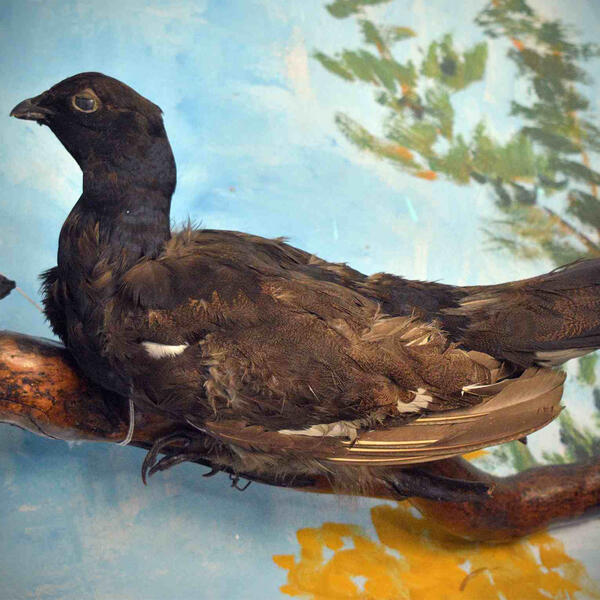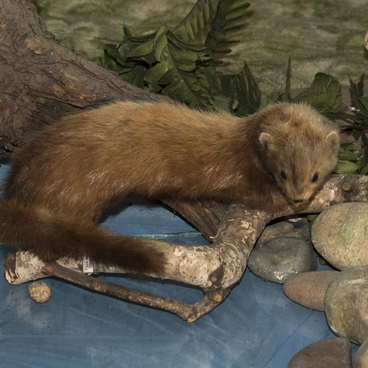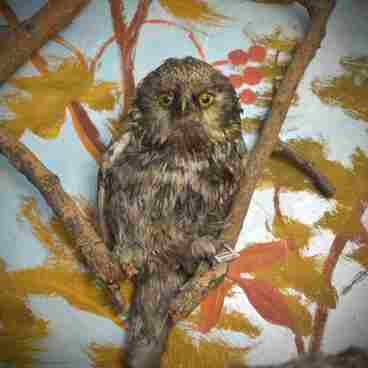The female Eurasian capercaillie is half the weight of the male. The length of its body from the end of its beak to the tail is approximately 54 to 64 centimeters, its wingspan is 70 cm and weight is, on average, 1.8 kg. The feathers on its upper parts are brown in color with black and silver stripes, while those on the lower section are lighter — bright yellow. Such plumage is essential for the female so that it can easily blend into its surroundings during the nesting season. Females, particularly the ones with hatchlings, need food and a suitable location. They require edible plants and small insects for their young, as well as shelter in the form of dense thickets of young trees or glades covered by tall plants plus old trees with horizontal branches where they can sleep. Such places can most often be found in virgin forest stands with firs and pines. In general, Eurasian capercaillie live within their territories but they can migrate from mountains to valleys during changes in season. Approximately three days after mating, the female starts laying eggs. The clutch is complete ten days later. On average, it lays 8 eggs, although the number can reach 12. The bird incubates them from 26 to 28 days depending on the weather and the height above sea level.
At the start of the incubation period, females are very sensitive to noise and leave their nests hastily. Before their eggs hatch, they persevere harder and remain in place in spite of danger cowering in their nests, which are normally hidden under lower branches of young trees. Practically all the eggs hatch at the same time. Afterwards, the female and its offspring leave their nest where they would otherwise be more vulnerable. Upon hatching, the baby birds are covered in their entirety with downy feathers. They cannot maintain their body temperatures, which is 41° C, on their won. Hence, on cold and rainy days, their mother keeps them warm all night long. The youngsters search for food themselves and typically hunt insects. They grow quickly, and most of the calories they consume are used to build up muscle mass. At the age of 3 to 4 weeks, the fledglings go on their first short flights. Afterwards, they begin sleeping in trees. In the first weeks of their lives, these young birds depend on food rich in protein. Hence, they primarily hunt insects and spiders during this period. The weather has a significant impact on the number of insects available. Dry and warm conditions encourage the baby birds to grow quickly, while cold and rainy weather results in a high death rate among them.
At the start of the incubation period, females are very sensitive to noise and leave their nests hastily. Before their eggs hatch, they persevere harder and remain in place in spite of danger cowering in their nests, which are normally hidden under lower branches of young trees. Practically all the eggs hatch at the same time. Afterwards, the female and its offspring leave their nest where they would otherwise be more vulnerable. Upon hatching, the baby birds are covered in their entirety with downy feathers. They cannot maintain their body temperatures, which is 41° C, on their won. Hence, on cold and rainy days, their mother keeps them warm all night long. The youngsters search for food themselves and typically hunt insects. They grow quickly, and most of the calories they consume are used to build up muscle mass. At the age of 3 to 4 weeks, the fledglings go on their first short flights. Afterwards, they begin sleeping in trees. In the first weeks of their lives, these young birds depend on food rich in protein. Hence, they primarily hunt insects and spiders during this period. The weather has a significant impact on the number of insects available. Dry and warm conditions encourage the baby birds to grow quickly, while cold and rainy weather results in a high death rate among them.



